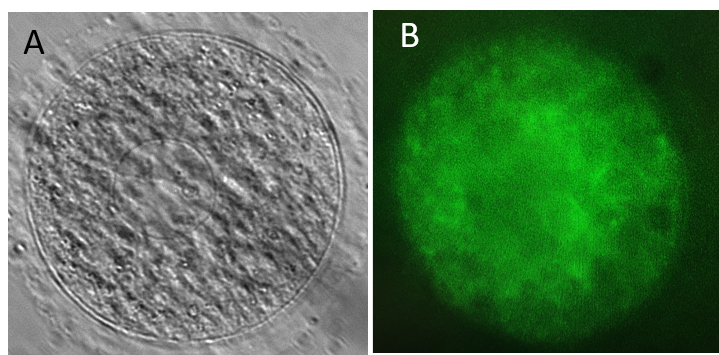For women who want their own biological children, a diagnosis of infertility due to a lack of viable eggs can be devastating. Ovarian failure in women can have many causes, including aging, autoimmune disease and exposure to radiation therapy and certain chemotherapy drugs.
Raymond Manohar Anchan, MD, PhD, is seeking to develop possible solutions to address ovarian failure. Dr. Anchan is a reproductive endocrinologist and infertility specialist as well as a stem cell scientist in the department of Obstetrics, Gynecology and Reproductive Biology at Brigham Health’s Center for Infertility and Reproductive Surgery. He is conducting work on induced pluripotent stem cells (iPSCs), a type of autologous stem cells from an individual, with the goal of generating patient-specific eggs that can be fertilized and are capable of developing into viable offspring.
“Because I treat infertility and perform in vitro fertilization procedures in my patients, I know the emotional toll and the impact of low egg retrieval or unsuccessful IVF treatment on my patients,” he said. “Routine surgical procedures result in discarded tissue samples. This tissue is very useful for research and may prove important in generating patient-specific treatments using stem cells derived from such discarded tissue.”
In 2015 Dr. Anchan reported in the journal PLoS One the successful use of different autologous iPSCs to generate ovarian and oocyte cell types using a mouse model. In this study, he used chemical and genetic factors to coax somatic cells into iPSCs, which in turn were differentiated into ovarian cell types including primordial eggs. Subsequently these observations were expanded to human iPSCs in a 2018 study published in Reproductive Sciences.
“When you make iPSCs from a specific tissue and then let the cells differentiate, the majority of them will go back to the tissue they came from secondary to their epigenetic memory,” Dr. Anchan explained. “We decided to exploit the fact that these iPSCs came from non-reproductive cells of the ovary and used them to regenerate ovarian cell types.”
Two hallmarks of ovarian cells are their capacity to produce reproductive hormones and generate eggs. Dr. Anchan’s team at the Brigham showed that the cells they had produced could do both, which confirmed they were ovarian cells. Once these cells were generated, they were transplanted into mice that had been treated with chemotherapy to destroy their own ovarian tissue. Chemotherapy of the mice was done in collaboration with Dr. Kevin Elias, a Gynecologic Oncology physician in the Department of Obstetrics and Gynecology at Brigham Health.
To ensure the eggs came from the iPSCs generated in Dr. Anchan’s laboratory, the cells were labeled with a reporter gene, green fluorescent protein. The eggs that were subsequently produced were green. Pre-treating the mice that received the stem cell transplants with chemotherapy, not only approximated a human disease model but also helped to ensure the eggs they produced had come from the donor stem cells. According to Dr. Anchan, this work provides a model for eventually developing treatments in women whose ovarian tissue has been damaged due to premature ovarian failure or cancer treatment.
In additional research, Dr. Anchan and his team have found that the mouse eggs generated could be fertilized in a dish. They have observed that after fertilization, the eggs began dividing and differentiating into embryos. A publication detailing these results is forthcoming.
Future research will focus on whether pups born from the fertilized eggs develop normally into adulthood. The researchers then will look at whether these pups are genetically normal, which will require sequencing of all the DNA.
“There is much work that needs to be done before this type of research can advance to human cells and tissues, even in the very earliest stages in the lab,” Dr. Anchan concluded. “But I see patients all the time who are looking for solutions to their infertility problems, so I know there is a need to continue moving the field forward. This is one of several potential solutions that is worth pursuing.”

Current studies are investigating the feasibility of generating functional oocytes in mice using induced pluripotent stem cells A: Picture of oocyte B: Green fluorescent protein labeling confirming the origin of this mouse oocyte developed from GFP-labeled iPSCs.